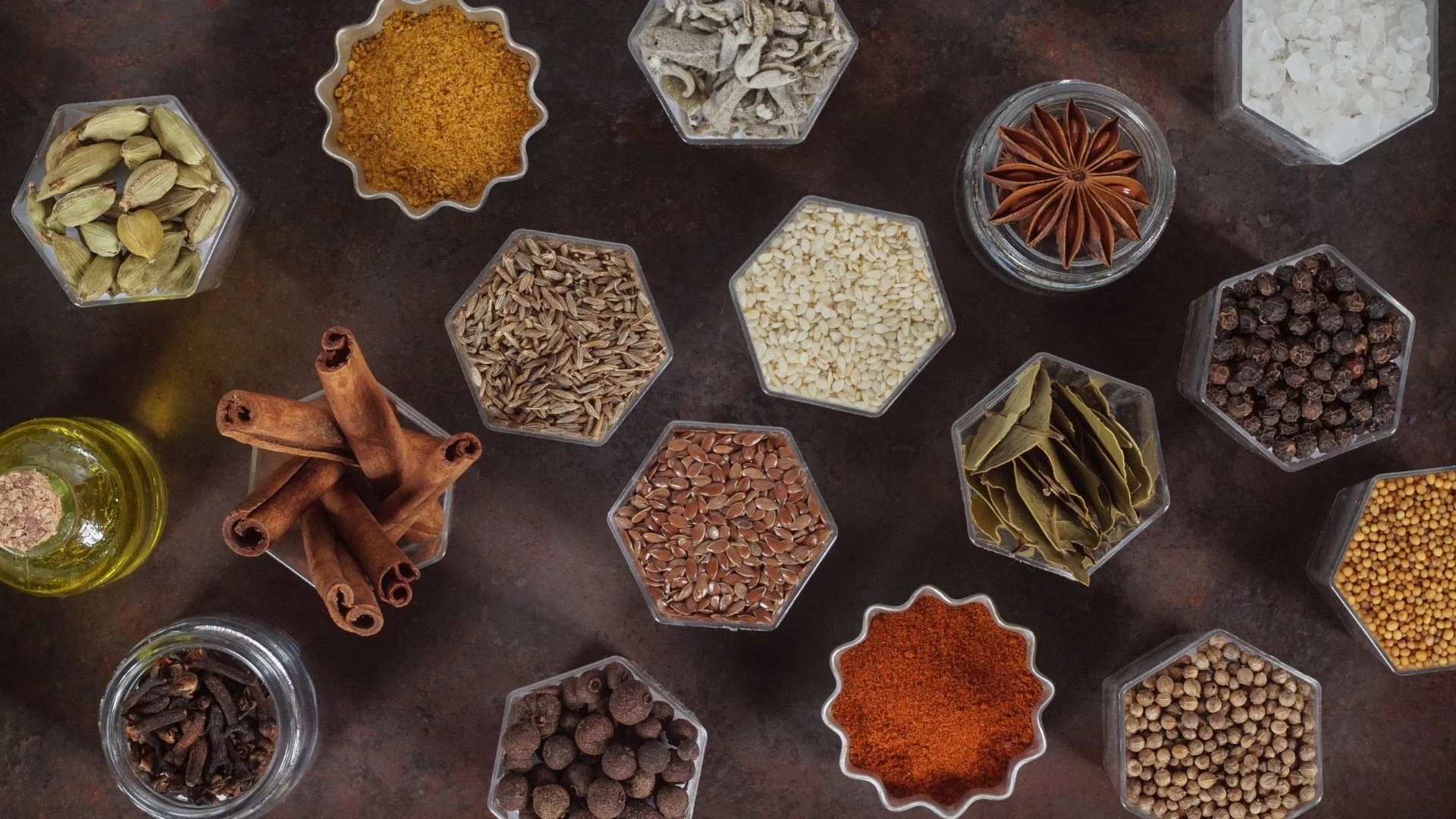Rising Health Consciousness and International Demand Propel India’s Spice Industry to New Heights
Renub Research has recently published an in-depth report on the India Spice Market, revealing a thriving and evolving industry driven by both domestic consumption and booming exports. India, known as the "Spice Bowl of the World," continues to dominate the global spice sector with its rich heritage, diverse product offerings, and a fast-expanding food processing industry.
📌 Download a Free Sample Report Now
👉 https://www.renub.com/request-sample-page.php?gturl=india-spice-market-p.php
The Timeless Appeal of Spices in Indian and Global Kitchens
Spices are an integral part of Indian cuisine, culture, and economy. From turmeric and cumin to cardamom and chili, India's spice diversity serves both traditional home kitchens and international gourmet markets. The demand for Indian spices is not just limited to flavor; it also stems from their medicinal properties, clean-label appeal, and relevance in the wellness and nutraceutical sectors.
As consumer preferences shift toward natural, organic, and immunity-boosting food products, the Indian spice market is poised to scale even greater heights.
Key Drivers of Growth in the India Spice Market
1. Booming Export Potential
India is the world's largest producer, consumer, and exporter of spices. The rising global preference for ethnic cuisines, health-promoting herbs, and organic food has led to a surge in spice exports to North America, Europe, and the Middle East. Export volumes have increased significantly, with major products like turmeric, chili, cumin, coriander, and ginger leading the way.
Government initiatives such as the Spice Board of India’s support programs, export subsidies, and the promotion of GI-tagged spices have further enhanced India’s global competitive edge.
2. Health and Wellness Trend Fueling Domestic Demand
In the wake of the COVID-19 pandemic, there has been a marked shift toward natural immunity boosters and Ayurvedic ingredients. Spices like turmeric (curcumin), ginger, and black pepper have witnessed a surge in demand for their anti-inflammatory and antioxidant properties.
This trend is not only fueling retail consumption but also expanding opportunities in the functional foods, supplements, and personal care industries.
3. Growth of Organized Retail and E-Commerce Channels
Modern trade and e-commerce platforms are revolutionizing how consumers buy spices. Branded, packaged, and organic spices are now widely available online and in supermarkets, offering consistency, hygiene, and trust. Additionally, rising income levels and urban lifestyles are contributing to a shift from loose spices to packaged spice blends, enhancing market value.
Major players are leveraging digital platforms to reach new consumer bases through innovative spice mixes, combo packs, and subscription models.
India Spice Market Segmentation
By Product Type
-
Turmeric
-
Chilli
-
Cumin
-
Coriander
-
Cardamom
-
Pepper
-
Ginger
-
Garlic
-
Fennel
-
Fenugreek
-
Mustard
-
Others (Cloves, Nutmeg, etc.)
By Form
-
Whole Spices
-
Ground/Powdered Spices
-
Blended Spices
-
Paste & Extracts
By Application
-
Culinary Uses (Household, Hotels & Restaurants)
-
Medicinal & Herbal Remedies
-
Food Processing Industry
-
Cosmetic & Personal Care
-
Nutraceuticals
By Distribution Channel
-
Traditional Retail
-
Supermarkets/Hypermarkets
-
E-Commerce
-
Wholesale & Export
Key Trends Reshaping the Indian Spice Market
Rising Demand for Organic and Ethically Sourced Spices
With increasing consumer awareness about pesticide residues and sustainable farming, demand for organic spices is rapidly growing. Certifications such as USDA Organic, India Organic, and Fair Trade are now major decision drivers in both domestic and international markets.
Spice Blends and Convenience Products on the Rise
As Indian consumers embrace fast-paced lifestyles, ready-to-use masalas, spice kits, and curry powders are gaining popularity. Customized blends for regional cuisines—such as Garam Masala, Sambhar Powder, and Biryani Masala—are seeing rising demand from working professionals and millennials.
Innovation in Processing and Packaging
Modern techniques such as cryogenic grinding help retain essential oils and nutrients in spices, improving flavor and shelf life. Vacuum sealing, zip-lock packaging, and biodegradable materials are becoming mainstream, enhancing product safety and eco-friendliness.
Competitive Landscape
India’s spice industry features a blend of large FMCG companies, regional brands, and small-scale processors. Major players are investing in backward integration, traceability, and sustainable sourcing to strengthen their market position.
Key Players:
-
Everest Spices
-
MDH (Mahashian Di Hatti)
-
Catch (DS Group)
-
Badshah Masala
-
Eastern Condiments
-
Patanjali Ayurved
-
Organic India
-
Tata Sampann (Tata Consumer Products)
These brands are expanding product portfolios, penetrating Tier 2 and Tier 3 cities, and exploring international distribution networks to capitalize on growing demand.
Challenges in the Indian Spice Market
Despite its robust foundation, the industry faces a few critical challenges:
-
Adulteration and Quality Control: Instances of synthetic dyes and impurities pose concerns about food safety and export compliance. Strengthening regulatory oversight and implementing testing infrastructure is essential.
-
Climate Sensitivity: Spice crops like cardamom and pepper are highly sensitive to changing weather patterns and rainfall fluctuations, affecting yields and prices.
-
Fragmentation and Informal Sector Dominance: A large portion of the industry is still unorganized, limiting scalability, branding, and standardization efforts.
However, government support through initiatives like MIDH (Mission for Integrated Development of Horticulture) and increasing private sector participation are helping mitigate these issues.
The Road Ahead: Spice Industry Outlook
The India Spice Market is expected to continue its upward trajectory, supported by strong export potential, rising health awareness, and the transformation of consumption patterns. With growing investments in processing, quality control, packaging innovation, and digital outreach, the industry is set to unlock new domestic and global opportunities.
Companies that align with evolving consumer needs—such as sustainability, authenticity, and convenience—will be well-positioned to lead this next chapter of India's spice story.
📌 Access the Sample Report for Complete Insights
👉 https://www.renub.com/request-sample-page.php?gturl=india-spice-market-p.php
New Publish Report:
- India Ophthalmic Devices Market Size and Share Analysis - Growth Trends and Forecast Report 2025-2033
- India Urinary Tract Infection Treatment Market Forecast 2025–2033
- India Oral Care Market Insights & Forecast 2025–2033
About the Company
Renub Research is a Market Research and Consulting Company with more than 15 years of experience, especially in international Business-to-Business Research, Surveys, and Consulting. We provide a wide range of business research solutions that help companies make better business decisions.
We partner with clients across all sectors and regions to identify their highest-value opportunities, address their most critical challenges, and transform their businesses. Our wide clientele includes key players in Healthcare, Travel & Tourism, Food & Beverages, Power & Energy, Information Technology, Telecom & Internet, Chemicals, Logistics & Automotive, Consumer Goods & Retail, Building & Construction, and Agriculture.
Our core team comprises experienced professionals with graduate, postgraduate, and Ph.D. qualifications in Finance, Marketing, Human Resources, Bio-Technology, Medicine, Information Technology, Environmental Science, and more.
Media Contact
Company Name: Renub Research
Contact Person: Rajat Gupta, Marketing Manager
📞 Phone No: +91-120-421-9822 (IND) | +1-478-202-3244 (USA)
📩 Email: rajat@renub.com
🌐 Website: www.renub.com
This press release is based on Renub Research’s latest report:
India Spice Market Forecast 2025–2033
📌 Download the Free Sample Report Today
👉 https://www.renub.com/request-sample-page.php?gturl=india-spice-market-p.php





